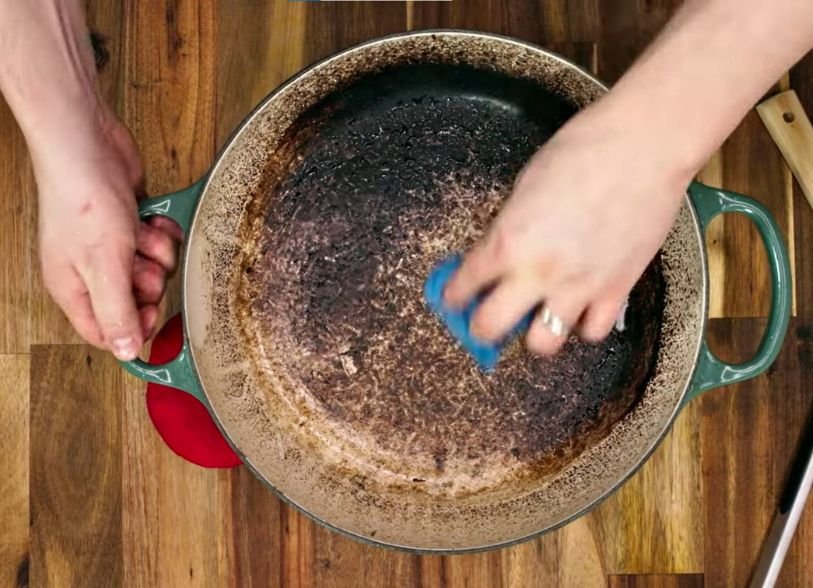Last Updated on February 6, 2024
How to Remove Stubborn Stains
Removing stubborn, baked-on stains from your favorite stoneware cooking pieces can seem daunting, but with the right approach, restoring them to their former glory is possible. The key is to use a combination of physical and chemical cleaning methods that are effective yet gentle enough to preserve the integrity of the stoneware. Start by soaking the stoneware in hot, soapy water for several hours or even overnight. This will help loosen some of the baked-on food.
If the stains persist, create a paste of baking soda and water, then apply it directly to the stained areas. Baking soda acts as a mild abrasive that can help lift stains without damaging the stoneware’s surface.
Consider using a solution of equal parts water and white vinegar for tougher stains. The acidity of the vinegar works to break down the stains. Apply the mixture to the stoneware and let it sit for a few hours, then scrub gently with a non-abrasive sponge or brush. Rinse thoroughly with warm water and dry with a soft cloth. A specialized stoneware cleaner might be necessary for those particularly stubborn stains that these methods can’t tackle. However, always ensure it’s suitable for use on your specific type of stoneware to avoid any potential damage. Regular maintenance and immediate cleaning after use can prevent the build-up of these challenging stains, keeping your stoneware looking pristine and ready for your next culinary adventure.
How to Restore Your Stoneware’s Seasoning
Restoring the seasoning on your stoneware is crucial for maintaining its non-stick properties and ensuring that it continues to perform optimally in your cooking endeavors. Seasoning is the process of building up a layer of oil or fat on the stoneware’s surface, creating a natural, non-stick coating. Over time, this coating can wear down, especially if the stoneware is cleaned aggressively or with harsh chemicals. To restore the seasoning, start by thoroughly cleaning your stoneware to remove any residue or built-up grime. Use a gentle cleaning method as described in the section above to avoid stripping away any existing seasoning.
Once the stoneware is clean and completely dry, apply a thin layer of cooking oil to the surface. It’s best to use an oil with a high smoke point, such as canola, vegetable, or flaxseed oil. Use a paper towel or a soft cloth to spread the oil evenly over the entire surface, including the sides. Next, place the stoneware in a cold oven and set the temperature to 350-400 degrees Fahrenheit. Let the stoneware bake for 1-2 hours, then turn off the oven and allow the stoneware to cool down completely inside. This process helps the oil polymerize and form a hard, durable layer that enhances the non-stick properties of the stoneware.
Repeat this seasoning process periodically, especially after cleaning the stoneware with any method that might strip the seasoning. With regular maintenance and proper care, your stoneware can continue to provide a superior cooking surface that enhances the flavor and quality of your food. Remember, the goal of seasoning is not just to restore the stoneware’s functionality but also to contribute to its longevity and performance in your kitchen.




